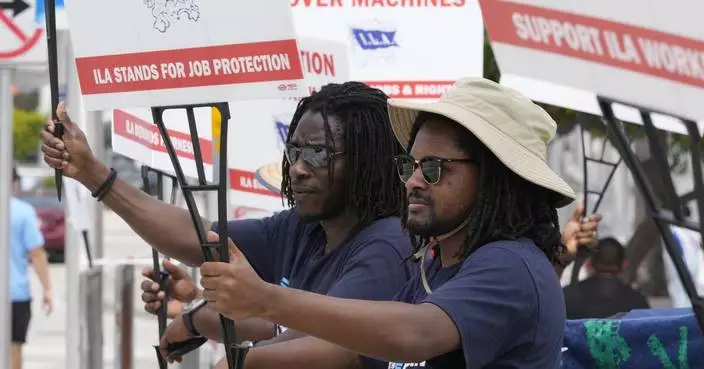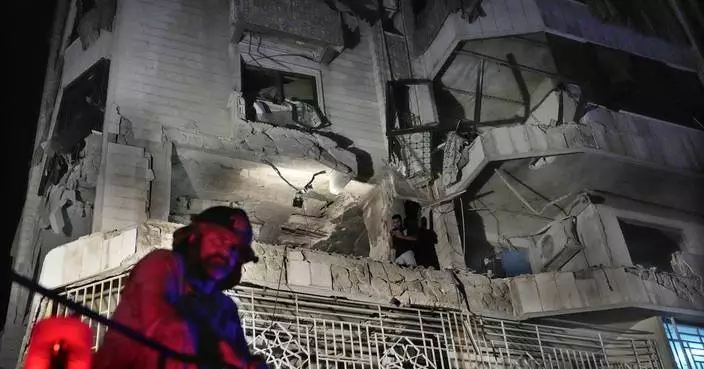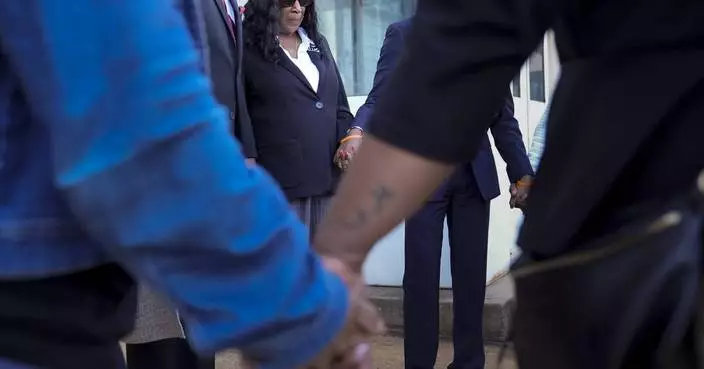SEOUL, South Korea (AP) — Dozens of South Korean adoptees, many in tears, have responded to an investigation led by The Associated Press and documented by Frontline (PBS) last week on Korean adoptions. The investigation reported dubious child-gathering practices and fraudulent paperwork involving South Korea’s foreign adoption program, which peaked in the 1970s and `80s amid huge Western demands for babies.
Here are some of the problems adoptees who responded say they faced, along with tips for finding histories and birth families.
Click to Gallery
SEOUL, South Korea (AP) — Dozens of South Korean adoptees, many in tears, have responded to an investigation led by The Associated Press and documented by Frontline (PBS) last week on Korean adoptions. The investigation reported dubious child-gathering practices and fraudulent paperwork involving South Korea’s foreign adoption program, which peaked in the 1970s and `80s amid huge Western demands for babies.
A city worker posts a flier on the crowded bulletin board of a government office in Bucheon, South Korea, Thursday, May 30, 2024. The flier, featuring two photos of Nicole Motta, an adoptee now residing in Los Angeles, taken as a toddler and an adult, was provided by the Global Overseas Adoptees' Link as part of Motta's search for her birth family. (AP Photo/Jae C. Hong)
Photos of adoptees participating at the Overseas Korean Adoptees Gathering are displayed on a large screen during the conference in Seoul Tuesday, May 21, 2024. (AP Photo/Jae C. Hong)
In this photo provided by Kyla Postrel, she stands with her half-brother, Robert Milburn, at his wedding in Norfolk, Va., in April 2024. She found him through a DNA test and their first in-person meeting was one day before his wedding. (Courtesy Kyla Postrel via AP)
Yooree Kim, who was sent to a couple in France by the Holt adoption agency when she was 11, displays some old photos of her and her brother in her apartment in Seoul, Saturday, May 18, 2024. (AP Photo/Jae C. Hong)
Kyla Postrel's paperwork tells two different stories, neither of which she’s sure is true.
After a DNA test last year, Postrel found a half-brother who was also adopted to the West. Comparing their paperwork made her even more skeptical of the stories they’d been told. But part of her is reluctant to keep looking "for something that may or may not exist and could be absolutely devastating.”
She has been flooded with messages from other adoptees looking for help, and tells them not to be disappointed if they can't track down their stories.
“I just don’t want any adoptees feeling like their life is a lie," she says. "Their life is everything that they’ve built since then.”
If her birth mother is still out there, Postrel would want her to know her daughter has had a good life.
Cody Duet, adopted to rural Louisiana in 1986, requested his full file a decade ago. He got back less than one page, saying his mother was a young factory worker, his father was unknown and there was nothing more they were required to give him.
“It was probably one of the most angry moments in my life," Duet says. "Who are you to tell me that I don’t get to know who I am?”
He fell into a depression and couldn’t sleep. He struggled with abandonment, like he was easy to get rid of, easy not to love. But now, he wonders, was that story even true?
The AP investigation found that children were systemically listed as abandoned, even though researchers have found that the vast majority had known relatives.
Now Duet wants to resume his search. He wants to find his mother, to tell her he’s reached a point in his life that he’s proud of.
Amy McFadden always believed what the adoption agency told her parents — that she was abandoned on a staircase at 5 weeks old.
Adopted to the United States in 1975, she’d heard stories about fraudulent adoptions, but always thought of them as one-off problems that had nothing to do with her. She’s grateful for her American life and close to her adoptive parents, and never felt the longing so many other adoptees do to reconnect with their roots.
But when she found out from the AP stories that mothers in South Korea have searched for their missing children for decades, she says, she was in shock for three days. Waves of nausea radiated over her.
She wants to submit her DNA, in case a family has been looking for her.
For Callie Chamberlain, waiting for word on whether her birth parents wanted to connect felt like standing on the edge of a cliff.
Her original documents said her mother was young, unmarried and uneducated, she says. Her full files from the South Korean agency contained a different story: Her mother was married and she was born of an affair. DNA testing showed both stories were untrue, and identified her mother and father as married both back then and now.
When they connected, her mother said she’d nearly died giving birth. The family was poor. Disoriented from labor and medications, her mother said she only vaguely remembered hospital staff insisting she was very sick and the child deserved a better home. The baby disappeared the next day. She lived with that shame for years, and the entire family searched for Chamberlain.
They have now invited her — and her adoptive family — with open arms. But Chamberlain has met many without such happy endings, and feels a sort of survivor's guilt. She also questions the belief that reunions will answer all questions and make you whole.
“There is so much grief and there’s so much sorrow," she says. "There’s this sense of death. And then there’s also so much that gets to be born. It’s an ancestral sorrow that I can feel sometimes, like this wasn’t supposed to happen.”
She has learned of a Korean cultural concept called “han,” an existential and endless grief, born from colonization, war, poverty and the line that cleaves Korea into North and South, splitting families for generations. “That’s something we experience too,” she said. “We are Koreans."
Here are some steps Korean adoptees could take to learn more about their past:
Adoptees can request information from their adoption agencies or the South Korean government's National Center for the Rights of the Child.
Birth searches can take months and aren’t always successful. Less than a fifth of 15,000 adoptees who have asked the government for help with family searches since 2012 have managed to reunite with relatives, according to data obtained by AP. Failures are often caused by inaccurate records or the practice of describing children as abandoned even when they had known parents.
Many adoptees also criticize the consent process for reunions. Adoption agencies and the NCRC can only use traditional mail, and only up to three times, to contact birth parents for their consent to provide personal details to adoptees and meet them. Privacy laws prevent agency and NCRC workers from accessing birth parents’ phone numbers. Still, the Korean-language adoption documents kept by South Korean agencies often have more background information than translated files sent to Western adoptive parents.
When they fail to locate birth parents, NCRC may recommend that adoptees register their DNA with South Korean police or diplomatic offices, or help them publish their stories in South Korean media.
Frustrated with search failures and unreliable records, many Korean adoptees in recent years have attempted to reconnect with their birth families through DNA. Adoptees can register their DNA with a South Korean embassy or consulate in the country where they live. They can also register their DNA with a local police station if they travel to South Korea.
DNA testing isn’t common in South Korea, and the process usually depends on whether the birth family had also been trying to find the adoptee through DNA. Once collected at diplomatic or police offices, adoptees’ genetic information is cross-checked with South Korea’s national DNA database for missing persons. When there is a match, the NCRC takes steps to arrange a reunion.
Some adoptees have also found birth relatives through commercial DNA tests popular in the West. The nonprofit group 325 Kamra helps South Korean adoptees and birth families reunite through DNA, by allowing adoptees to upload their commercial test results to a database or providing test kits.
There are various Facebook groups — some open, others closed for adoptees only — where adoptees talk about their lives and interactions with adoption agencies.
One of the most active pages is run by Banet, a volunteer group named after the Korean word for newborn baby clothing. The group helps adoptees search for birth families, connects them with government and police, and provides translation during meetings with Korean relatives.
Some websites are tailored to adoptees sharing the same agency, such as Paperslip, which helps adoptees placed through Korea Social Service with birth family searches and adoption document requests.
The Seoul-based nonprofit Global Overseas Adoptees’ Link assists adoptees with birth family searches as well as language education, social events and obtaining visas for employment in South Korea. KoRoot, another Seoul-based civic group, also helps adoptees searching for their families and backgrounds and runs advocacy programs.
—-
This story is part of an ongoing investigation led by The Associated Press in collaboration with FRONTLINE (PBS). The investigation includes an interactive and documentary, South Korea’s Adoption Reckoning. Contact AP’s global investigative team at Investigative@ap.org.
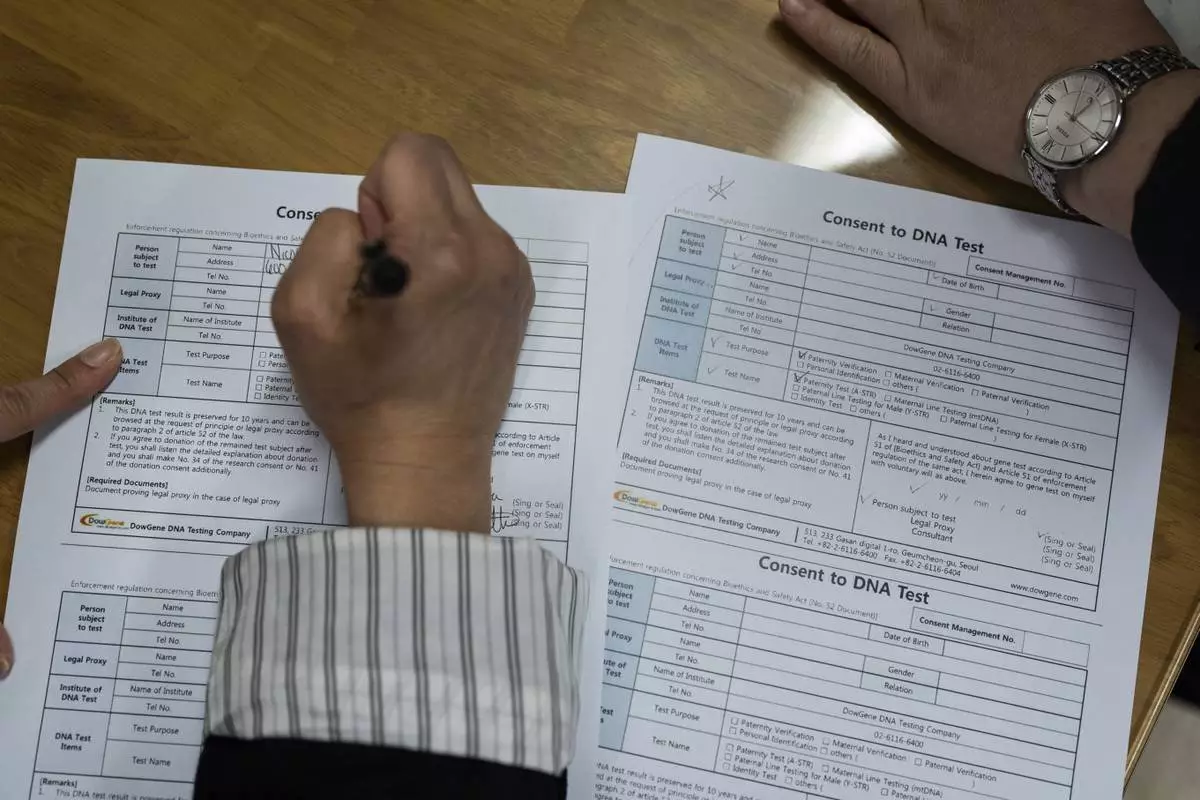
Nicole Motta, whose Korean name is Jang Hyeon-jung, fills out paperwork for a DNA test at the Eastern Social Welfare Society in Seoul, Friday, May 31, 2024, as she and her birth father are reunited for the first time since she was adopted by a family in Alabama, United States, in 1985. (AP Photo/Jae C. Hong)
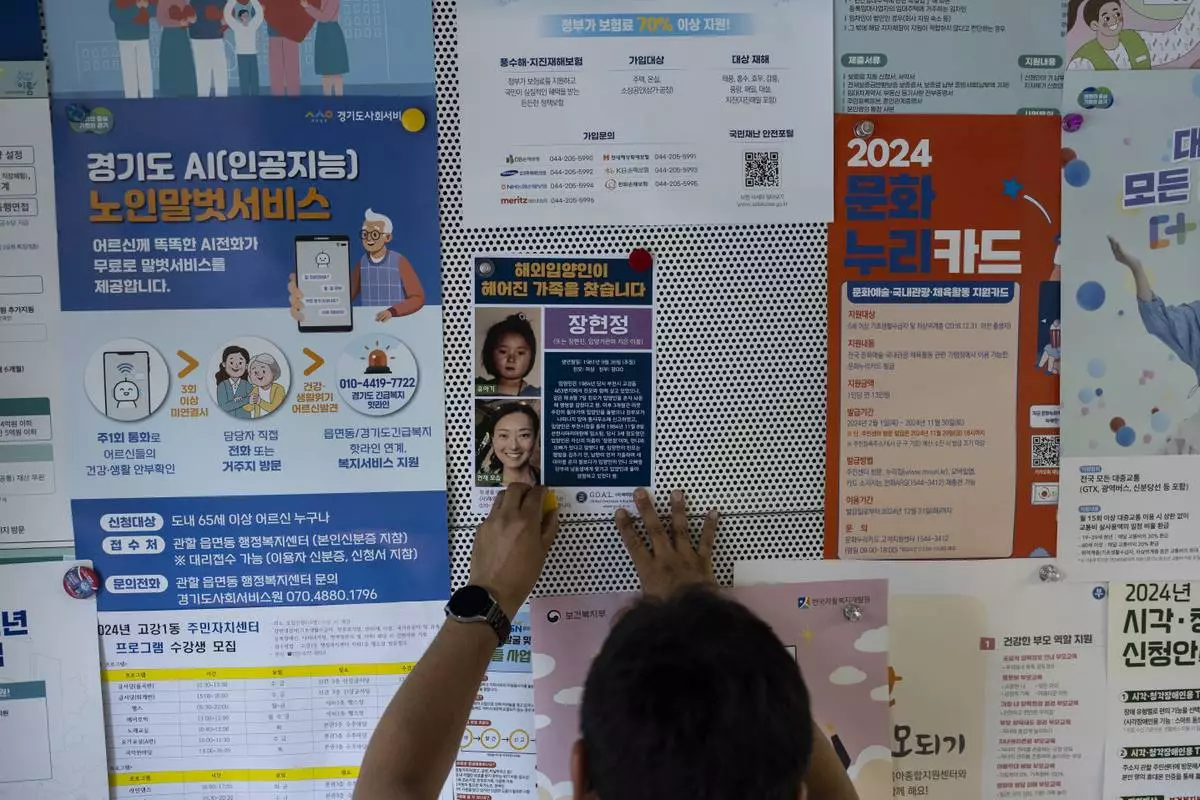
A city worker posts a flier on the crowded bulletin board of a government office in Bucheon, South Korea, Thursday, May 30, 2024. The flier, featuring two photos of Nicole Motta, an adoptee now residing in Los Angeles, taken as a toddler and an adult, was provided by the Global Overseas Adoptees' Link as part of Motta's search for her birth family. (AP Photo/Jae C. Hong)
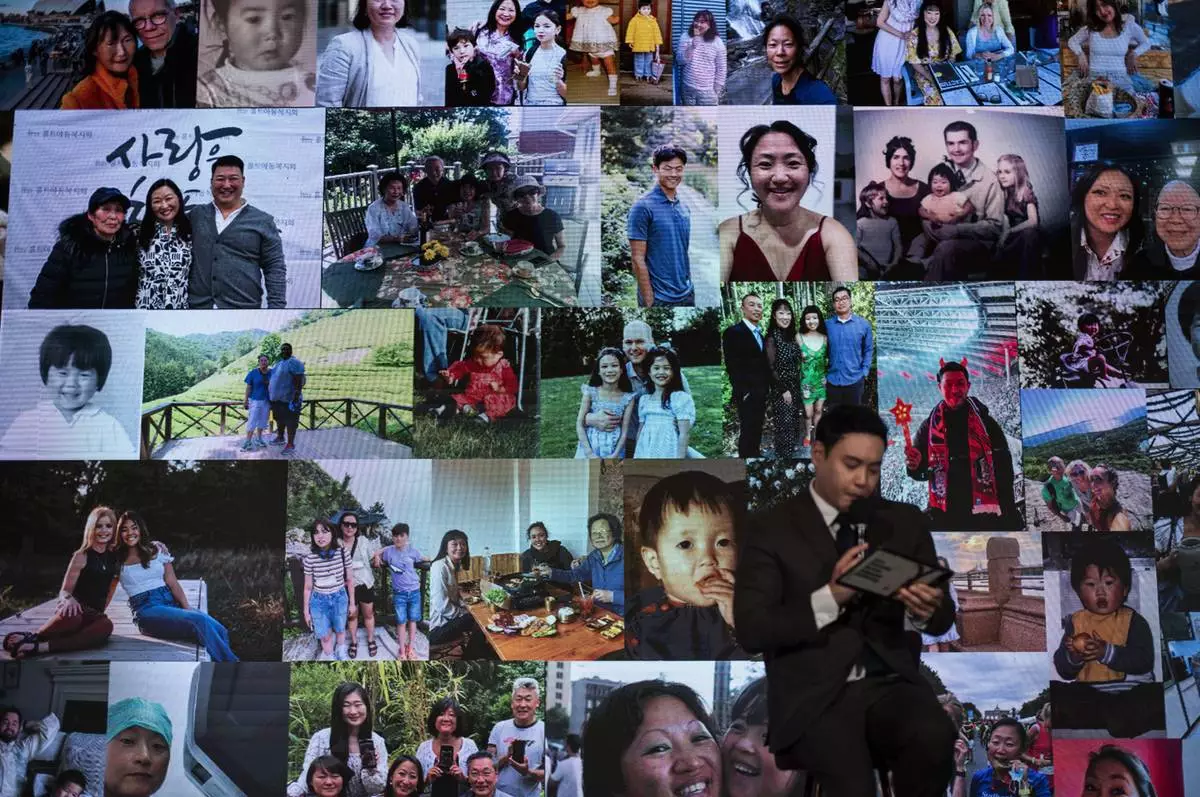
Photos of adoptees participating at the Overseas Korean Adoptees Gathering are displayed on a large screen during the conference in Seoul Tuesday, May 21, 2024. (AP Photo/Jae C. Hong)

In this photo provided by Kyla Postrel, she stands with her half-brother, Robert Milburn, at his wedding in Norfolk, Va., in April 2024. She found him through a DNA test and their first in-person meeting was one day before his wedding. (Courtesy Kyla Postrel via AP)

Yooree Kim, who was sent to a couple in France by the Holt adoption agency when she was 11, displays some old photos of her and her brother in her apartment in Seoul, Saturday, May 18, 2024. (AP Photo/Jae C. Hong)
BEIRUT (AP) — The Israeli military on Thursday warned people to evacuate communities in southern Lebanon that are outside a U.N.-declared buffer zone, signaling that it may widen a ground operation launched earlier this week against the Hezbollah militant group.
Meanwhile, Israeli forces said they had struck around 200 Hezbollah targets across Lebanon, including weapons storage facilities and observation posts. Strikes continued overnight when a series of massive blasts rocked Beirut’s southern suburbs. It was not immediately clear what was targeted or if there were casualties.
Israel told people to leave Nabatieh, a provincial capital, and other communities north of the Litani River, which formed the northern edge of the border zone established by the U.N. Security Council after the two sides fought a war in 2006. Each side accuses the other of violating the resolution.
At least nine Israeli soldiers have been killed in clashes with Hezbollah in southern Lebanon, where Israel announced the start of what it says is a limited ground incursion earlier this week. The fighting comes as the region braces for Israel's response to an Iranian ballistic missile attack.
The World Health Organization reported that 28 health workers were killed in the past day in Lebanon, and access to medical care is becoming limited as three dozen health facilities closed in the south and five hospitals were either partly or fully evacuated in Beirut.
The Lebanese health minister said Israeli strikes that hit nine hospitals and 45 health care centers violate international law and treaties.
“International laws are clear in protecting these people — I mean, paramedics," Firas Abiad said. "Who gave Israel the right to be the judge and the executioner at the same time?”
The Lebanese Red Cross said an Israeli strike wounded four of its paramedics and killed a Lebanese army soldier as they were evacuating wounded people from the south. It said the convoy near the village of Taybeh, which was accompanied by Lebanese troops, was targeted Thursday despite coordinating its movements with U.N. peacekeepers. There was no immediate comment from the Israeli military.
Another Lebanese soldier was killed by Israeli fire at an army post in the southern town of Bint Jbeil, according to the Lebanese military, which said it returned fire. A Lebanese security official, who spoke on condition of anonymity according to regulations, said the army post was hit by artillery fire.
An Israeli airstrike on an apartment in central Beirut late Wednesday killed nine people, including seven Hezbollah-affiliated civilian first responders. Israel has been pounding areas of the country where the militant group has a strong presence since late September, but has rarely struck in the heart of the capital.
There was no warning before the strike late Wednesday, which hit an apartment not far from the United Nations headquarters, the prime minister’s office and parliament.
The Palestinian Health Ministry said 18 people were killed Thursday in an Israeli strike on the Tulkarem refugee camp in the West Bank. It was the deadliest strike in the occupied territory since the Israel-Hamas war erupted last October.
The Israeli army said the strike killed Hamas’ leader in Tulkarem. Hamas condemned the strike but did not confirm if any of its members were killed.
The military said the strike was carried out in coordination with the Shin Bet internal security service, but it gave no details on the target. Tulkarem is a militant stronghold in the northern West Bank. It remained unclear how many people were wounded in the blast.
Violence has flared across the Israeli-occupied territory since the Israeli-Hamas war erupted last October. Tulkarem and other northern Palestinian cities have seen some of the worst violence. Palestinian militant groups are active across the northern West Bank, areas where the Palestinian Authority has a limited foothold.
The Israeli military said Thursday that its strikes in Lebanon had killed at least 15 Hezbollah fighters.
There was no immediate comment from Hezbollah. But if the claim is true, it would mark the latest in a string of assassinations of top Hezbollah officials in recent weeks, including its longtime leader Hassan Nasrallah.
The Israeli military also said Thursday that it had killed a senior Hezbollah militant, Mohammed Anisi, who was involved in the group’s development of precision guided missiles. Anisi was killed in an airstrike targeting the group’s intelligence branch in Beirut, the army said.
Hezbollah said its fighters detonated a roadside bomb when Israeli forces entered the Lebanese border village of Maroun el-Ras, killing and wounding soldiers. It was not possible to independently confirm the claims made by either side.
So far, ground clashes between Israeli forces and Hezbollah militants have been confined to a narrow strip along the border.
But hundreds of thousands of people have fled their homes, as Israel has warned people to evacuate from dozens of villages and towns in the south, telling them to relocate to areas that are around 60 kilometers (36 miles) from the border and considerably farther north than the Litani River.
Under U.N. Security Council Resolution 1701, which ended the monthlong 2006 war between Israel and Hezbollah, the militants were to withdraw north of the Litani, and Lebanon's armed forces were to patrol the border region along with U.N. peacekeepers.
Neither Lebanon's army nor the peacekeepers were capable of imposing any agreement on Hezbollah by force, and Israel says it defied the resolution and built extensive military infrastructure in towns and villages near the border. Lebanon has accused Israel of violating other parts of the resolution.
Israel says it is targeting Hezbollah after nearly a year of rocket attacks that began Oct. 8 and displaced some 60,000 Israelis from communities in the north. Israel has carried out retaliatory strikes over the past year that have displaced tens of thousands on the Lebanese side.
In recent weeks, Israeli strikes in Lebanon have killed Hezbollah leader Hassan Nasrallah and several of his top commanders. Hundreds more airstrikes across large parts of Lebanon since mid-September have killed at least 1,276 people, according to Lebanon’s Health Ministry. Nearly 2,000 people have been killed and more than 9,000 wounded in Lebanon since the fighting began nearly a year ago.
The vast majority of recent strikes have been in areas where Hezbollah has a strong presence.
Iran-backed Houthi rebels in Yemen said they launched two drones at Tel Aviv overnight. The military said it identified two drones off the coast of the bustling metropolitan area, shooting one of them down while the other fell in the Mediterranean Sea.
Hezbollah, Hamas and the Houthis are part of the Iran-led Axis of Resistance, which also includes armed groups in Syria and Iraq. They have launched attacks on Israel in solidarity with the Palestinians, drawing retaliation in a cycle that has repeatedly threatened to set off a wider war.
The region once again appears on the brink of such a conflict after Iran’s missile attack on Tuesday, which it said was a response to the killing of Nasrallah, an Iranian Revolutionary Guard general who was with him, and Ismail Haniyeh, the political leader of Hamas, who was killed in an explosion in Tehran in July that was widely blamed on Israel.
Israel and the United States have said there will be severe consequences for the barrage, which lightly wounded two people and killed a Palestinian in the occupied West Bank. Military leaders from the two countries have been in regular communication “about what a response to Iran should look like,” Pentagon deputy press secretary Sabrina Singh said Thursday.
President Joe Biden said Thursday evening that he thought all-out war could be avoided.
“I think we can avoid it, but there’s a lot to do yet," he told reporters as he returned to the White House from a visit to areas battered by a recent hurricane. He added that “we're going to help Israel.”
A spokesman for Iran's mission to the UN cautioned against coordinated military action with Israel.
“Should any country render assistance to the aggressor, it shall likewise be deemed an accomplice and a legitimate target,” the spokesman said in a statement Thursday.
The escalating violence in Lebanon has opened a second front in the war between Israel and Iran-backed militants that began nearly a year ago with Hamas’ surprise Oct. 7 attack from the Gaza Strip into Israel.
The Israeli military said Thursday that it killed a senior Hamas leader in an airstrike in the Gaza Strip around three months ago. It said that a strike on an underground compound in northern Gaza killed Rawhi Mushtaha and two other Hamas commanders.
There was no immediate comment from Hamas. Mushtaha was a close associate of Yahya Sinwar, the top leader of Hamas who helped mastermind the Oct. 7 attack. Sinwar is believed to be alive and in hiding in Gaza.
Jeffery reported from Jerusalem. Associated Press staff writers Abby Sewell and Kareem Chehayeb in Beirut and Zeina Karam in London contributed to this report.
Follow AP’s war coverage at https://apnews.com/hub/israel-hamas-war

Flames and smoke rise from Israeli airstrikes in Dahiyeh, Beirut, Lebanon, Friday, Oct. 4, 2024. (AP Photo/Hussein Malla)

Flames and smoke rise from Israeli airstrikes in Dahiyeh, Beirut, Lebanon, Friday, Oct. 4, 2024. (AP Photo/Hussein Malla)

Flames rise from Israeli airstrikes in Dahiyeh, Beirut, Lebanon, Friday, Oct. 4, 2024. (AP Photo/Hussein Malla)
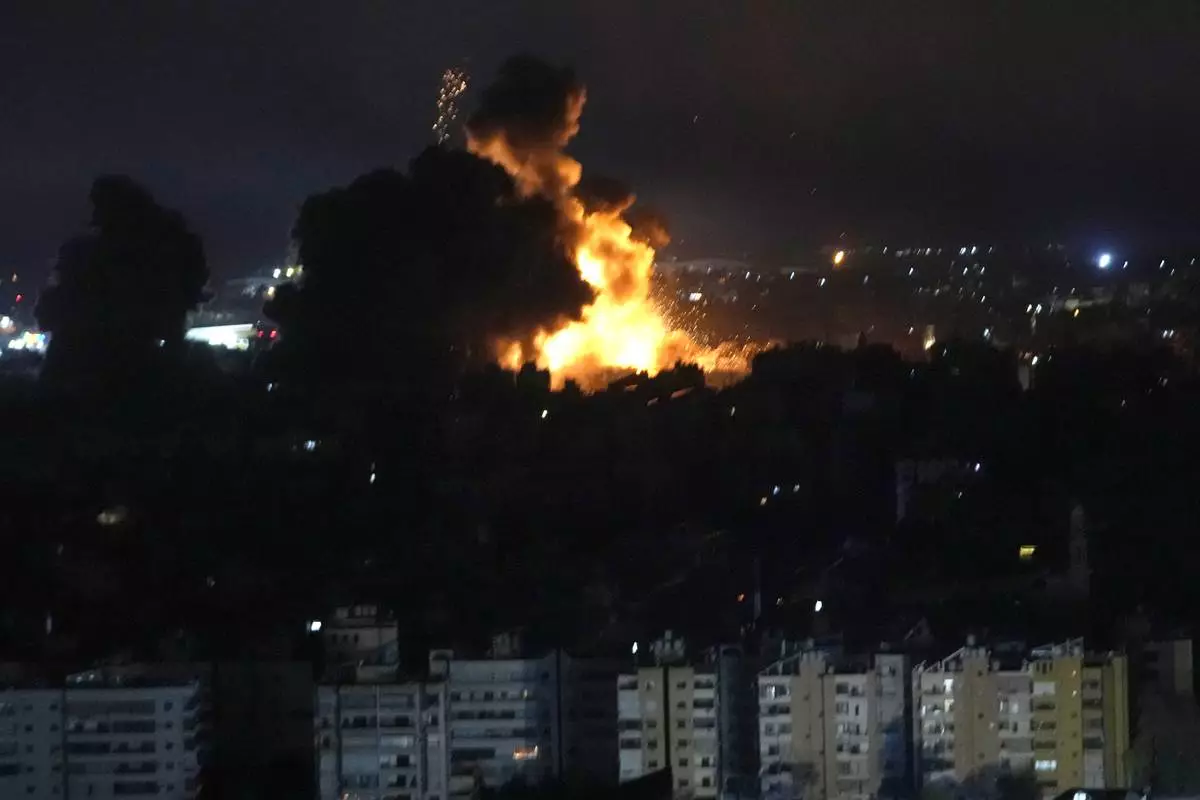
Flames rise from Israeli airstrikes in Dahiyeh, Beirut, Lebanon, Friday, Oct. 4, 2024. (AP Photo/Hussein Malla)
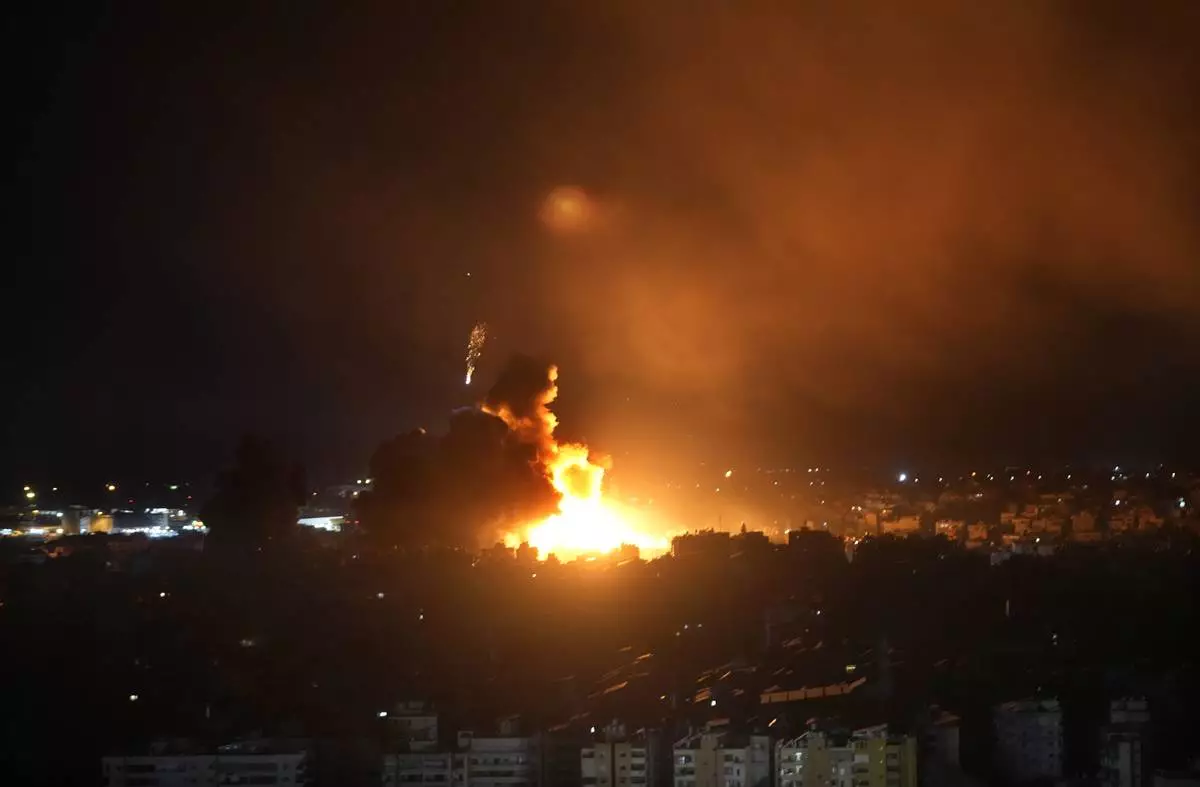
Flames rise from Israeli airstrikes in Dahiyeh, Beirut, Lebanon, Friday, Oct. 4, 2024. (AP Photo/Hussein Malla)

Flames rise from Israeli airstrikes in Dahiyeh, Beirut, Lebanon, Friday, Oct. 4, 2024. (AP Photo/Hussein Malla)
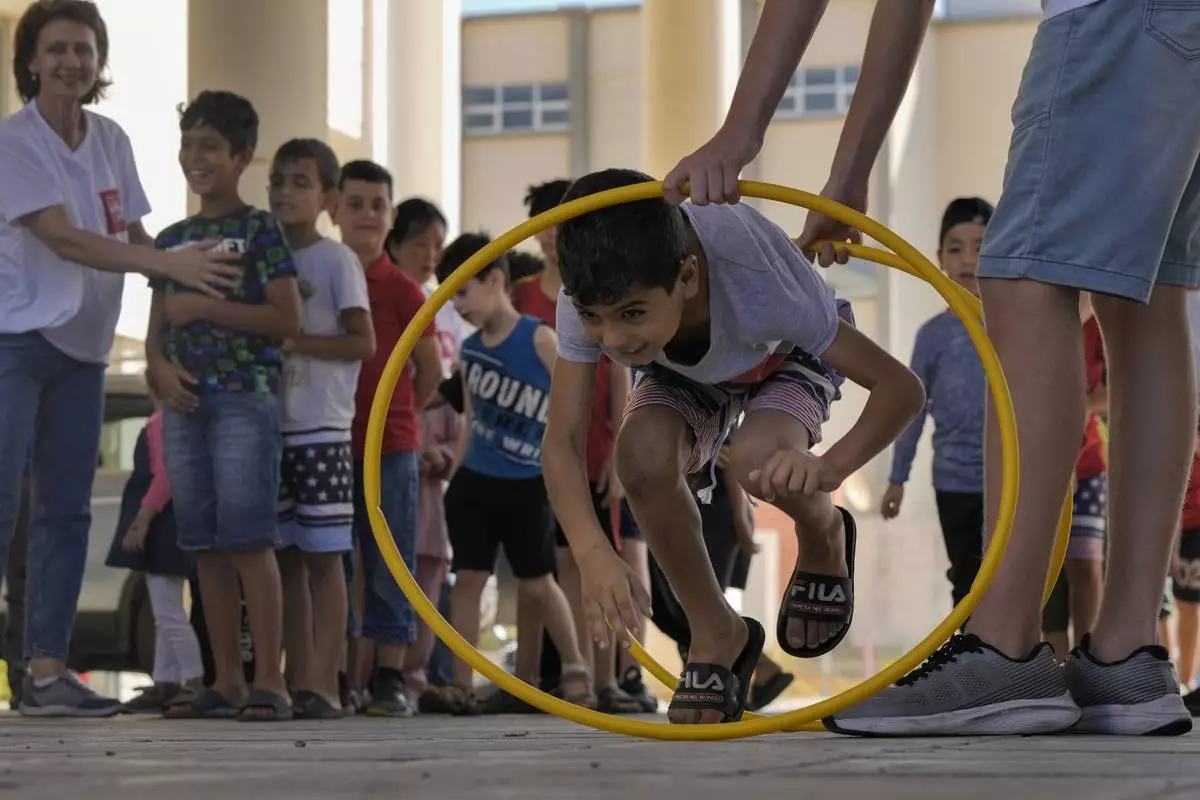
A volunteer of the Russian Cultural Center entertains displaced children at a school in Beirut, Lebanon, Thursday, Oct. 3, 2024, after fleeing the Israeli airstrikes in the south. (AP Photo/Bilal Hussein)
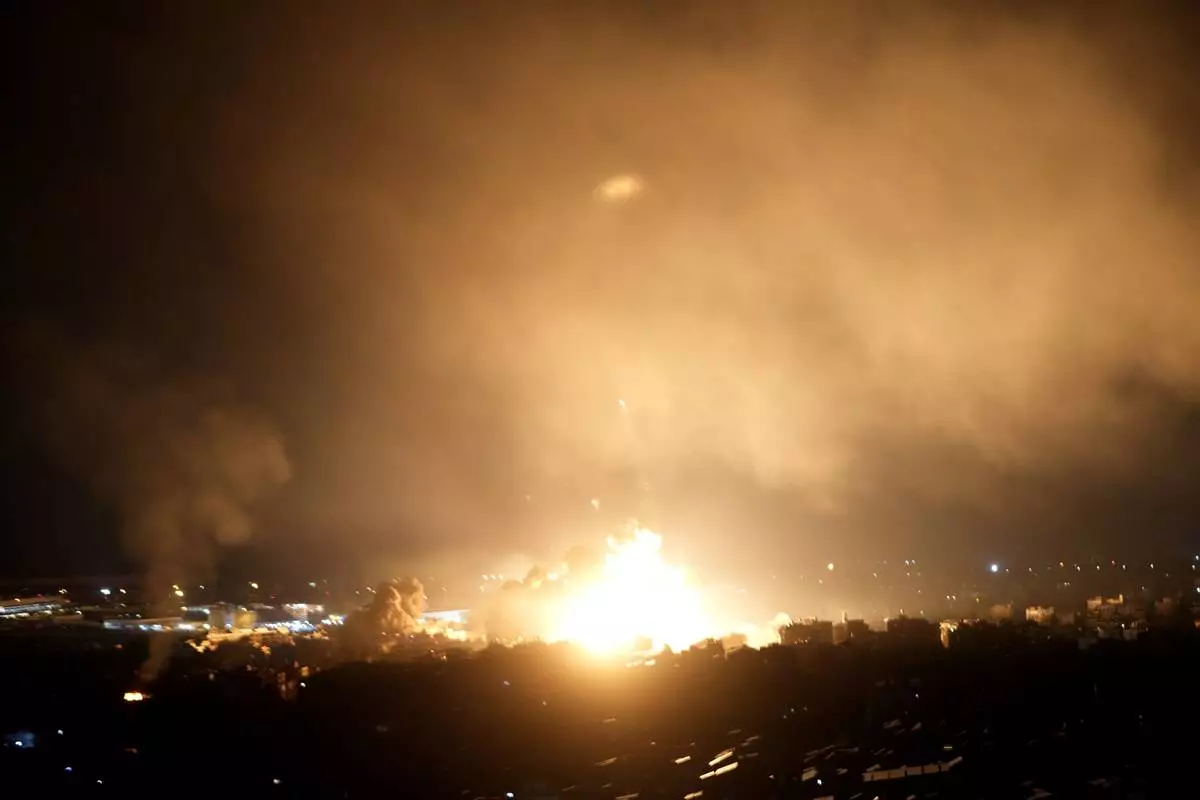
Flames rise from Israeli airstrikes in Dahiyeh, Beirut, Lebanon, Friday, Oct. 4, 2024. (AP Photo/Hussein Malla)
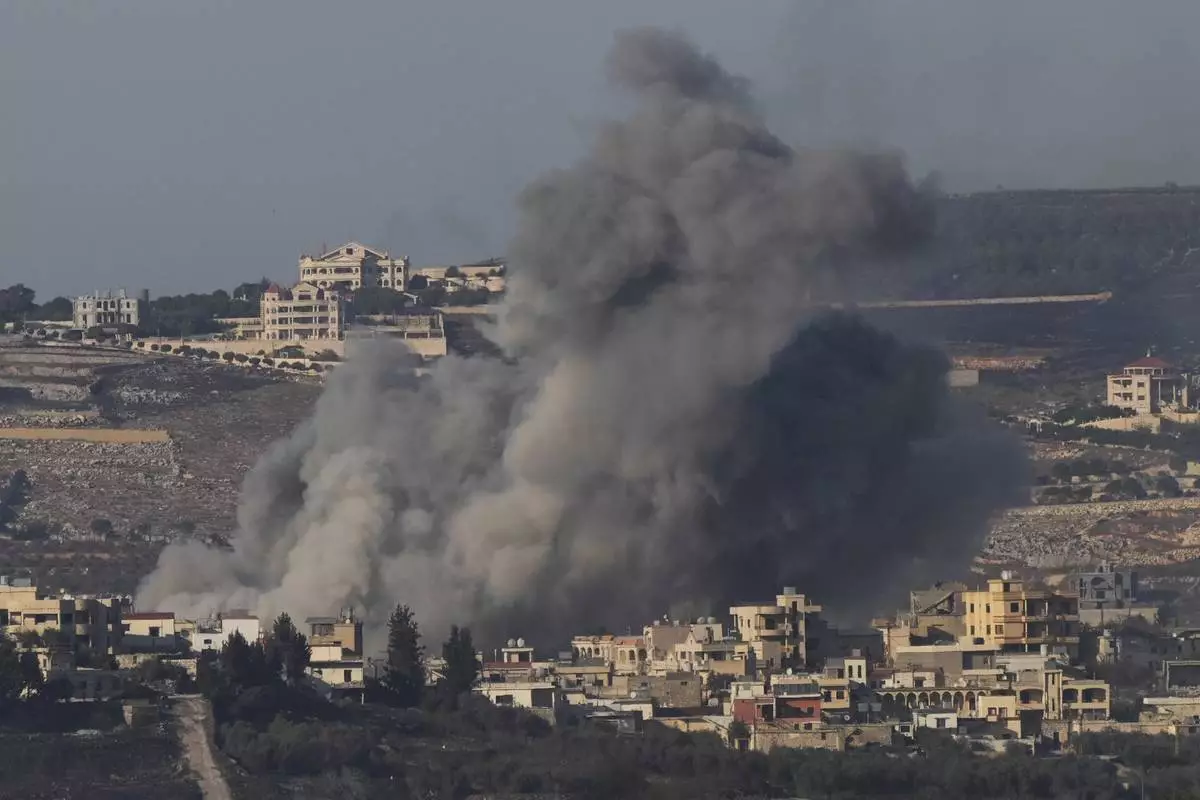
Smoke rises following an Israeli bombardment in southern Lebanon as seen from northern Israel, Thursday, Oct. 3, 2024. (AP Photo/Baz Ratner)
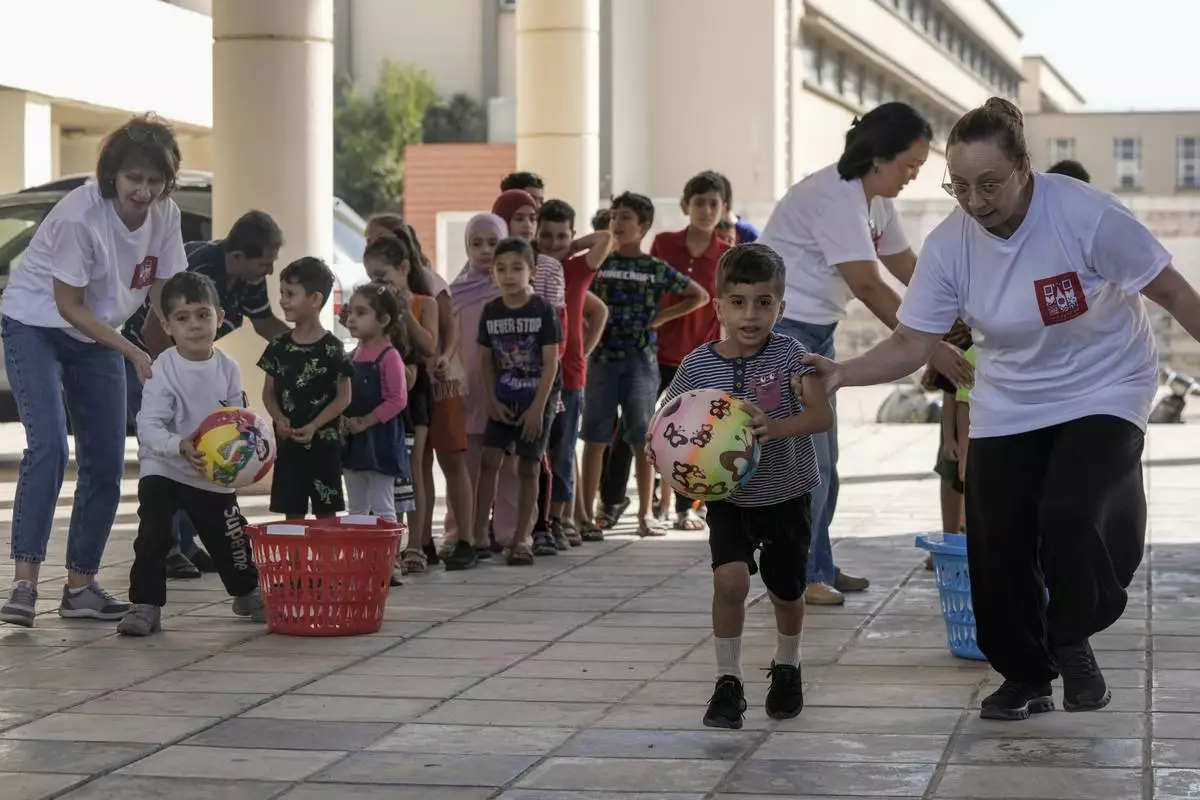
Volunteers of the Russian Cultural Center entertain displaced children at a school in Beirut, Lebanon, Thursday, Oct. 3, 2024, after fleeing the Israeli airstrikes in the south. (AP Photo/Bilal Hussein)
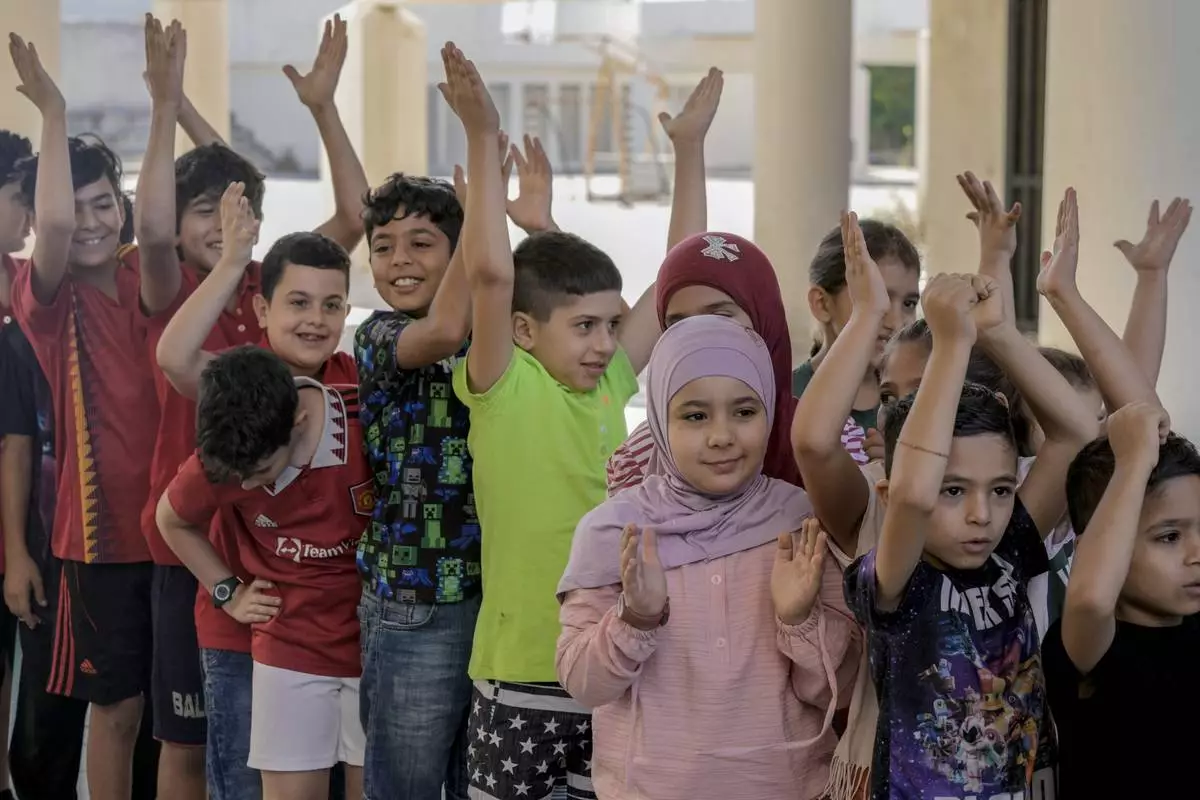
Volunteers of the Russian Cultural Center entertain displaced children at a school in Beirut, Lebanon, Thursday, Oct. 3, 2024, after fleeing the Israeli airstrikes in the south. (AP Photo/Bilal Hussein)

Zahraa on a wheel chair looks on as volunteers of the Russian Cultural Center entertain displaced children at a school in Beirut, Lebanon, Thursday, Oct. 3, 2024, after fleeing the Israeli airstrikes in the south. (AP Photo/Bilal Hussein)

Smoke rises after Israeli airstrikes in Dahiyeh, Beirut, Lebanon, Thursday, Oct. 3, 2024. (AP Photo/Fadi Tawil)
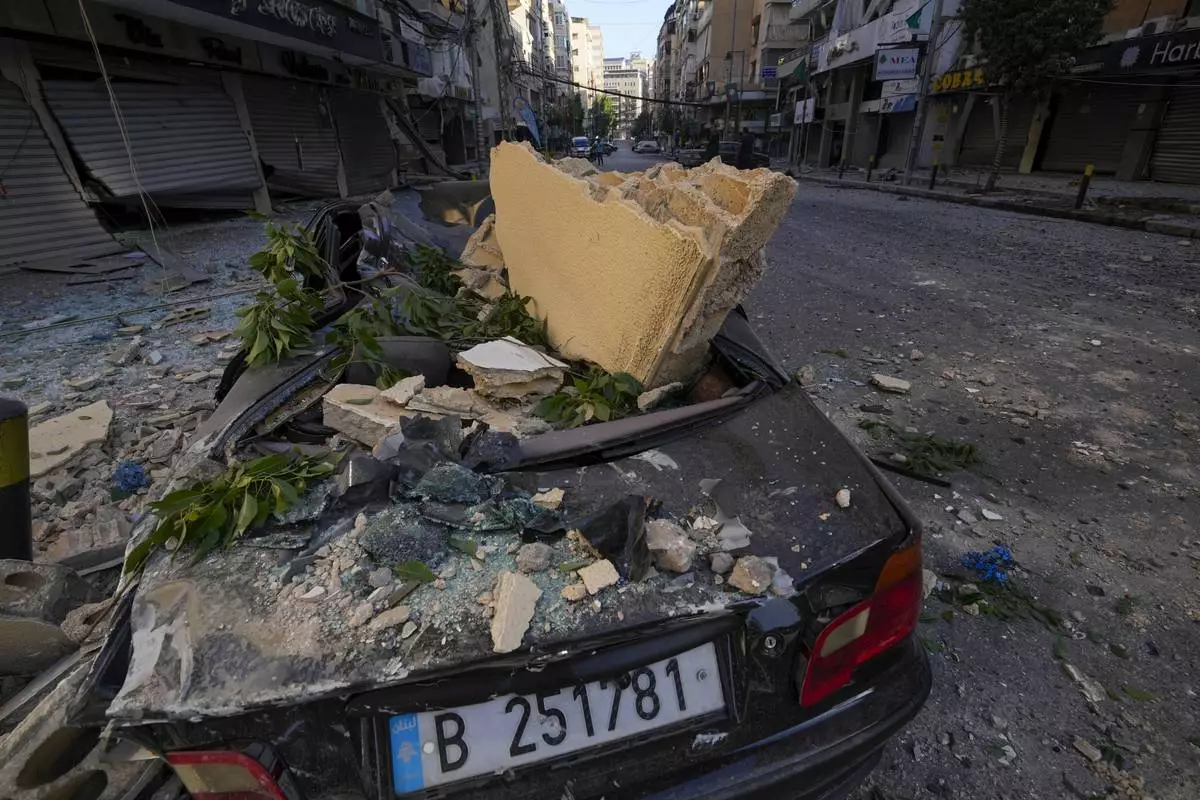
A wrecked car parked next to the site of an Israeli airstrike in Dahiyeh, Beirut, Lebanon, Thursday, Oct. 3, 2024. (AP Photo/Hassan Ammar)
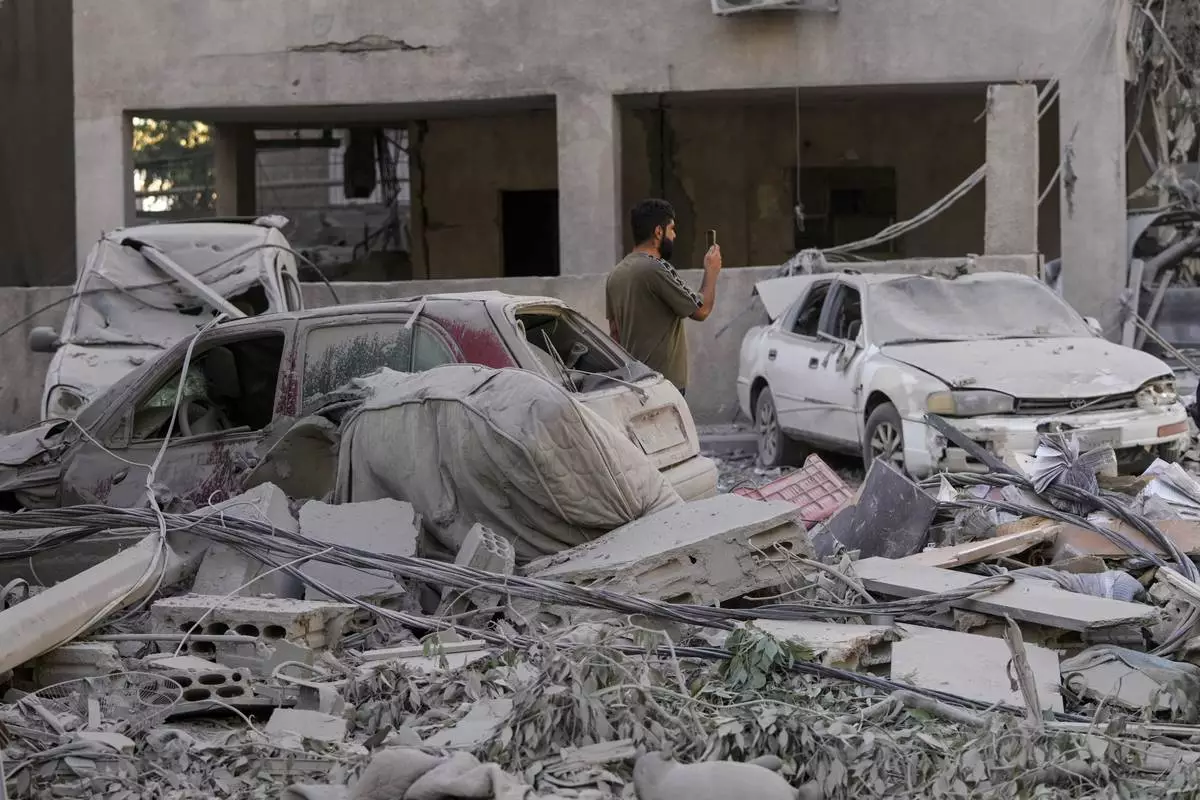
A man documents the damaged buildings at the site of an Israeli airstrike in Dahiyeh, Beirut, Lebanon, Thursday, Oct. 3, 2024. (AP Photo/Hassan Ammar)
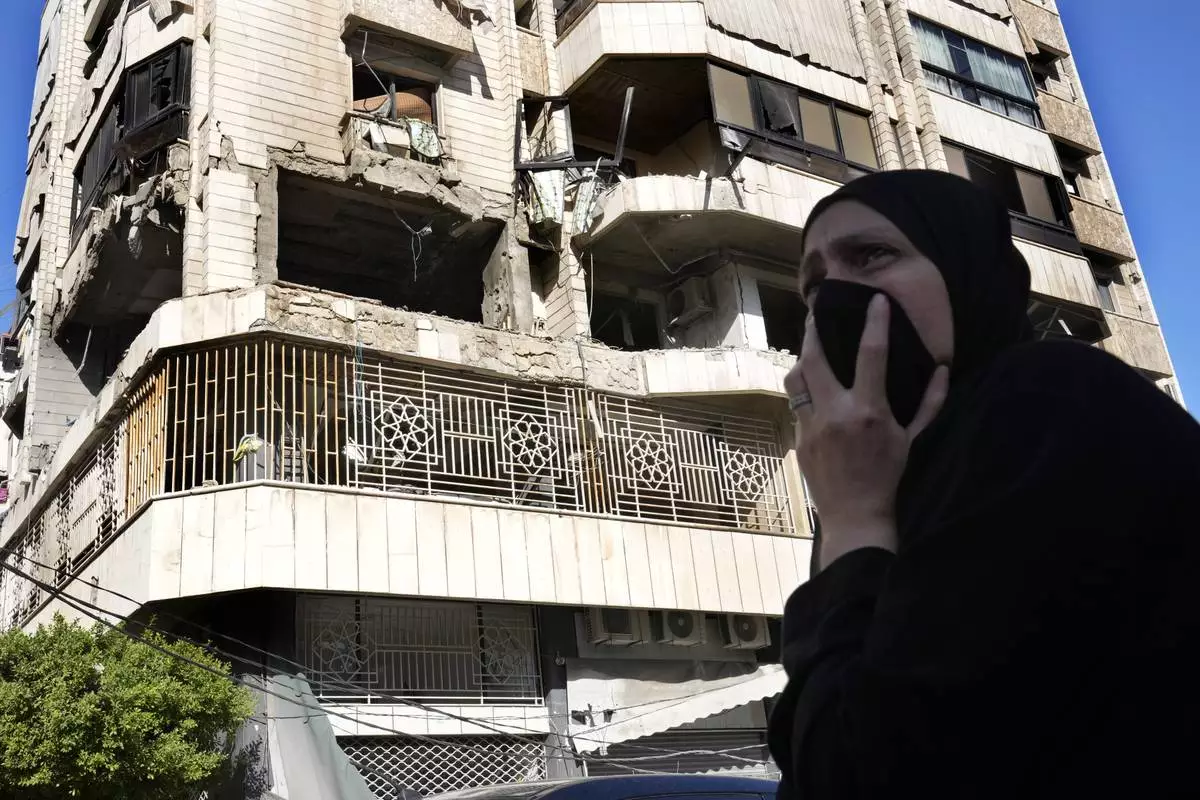
A woman reacts in front an apartment in a multistory building hit by Israeli airstrike, in central Beirut, Lebanon, Thursday, Oct. 3, 2024. (AP Photo/Hussein Malla)
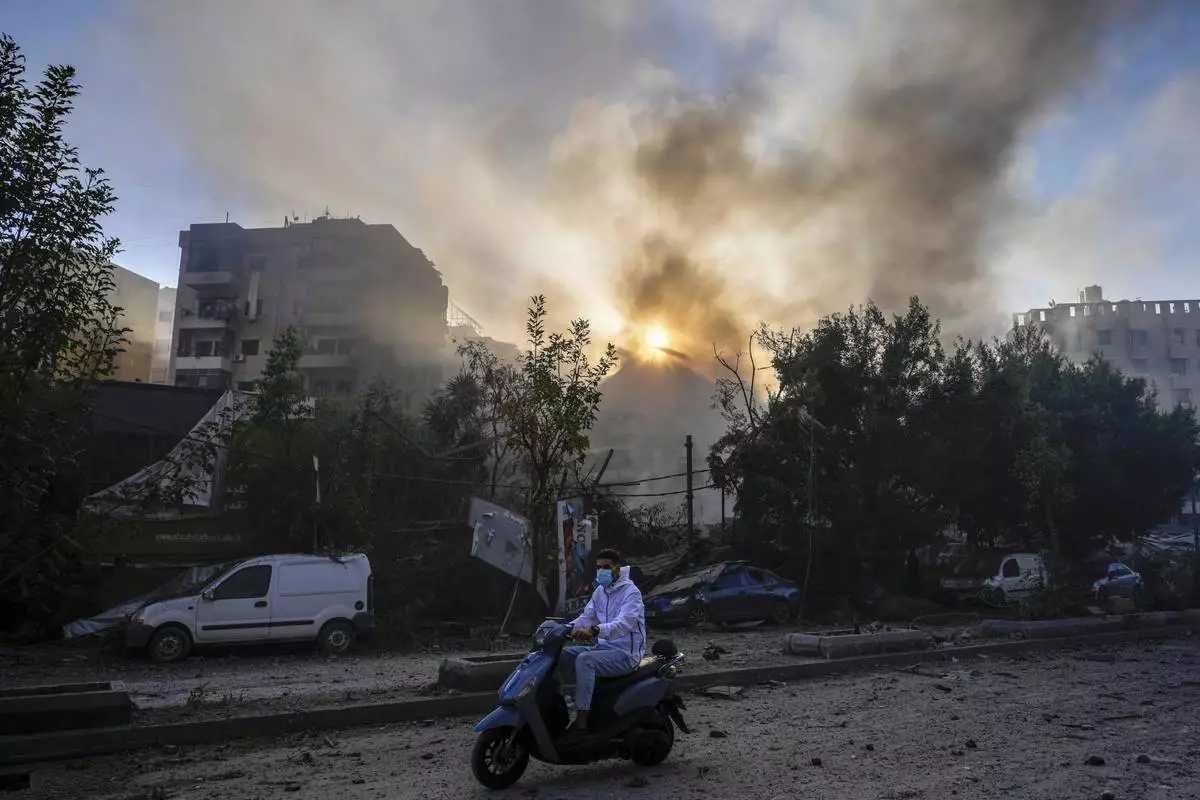
Smoke rises from the site of an Israeli airstrike in Dahiyeh, Beirut, Lebanon, Thursday, Oct. 3, 2024. (AP Photo/Hassan Ammar)
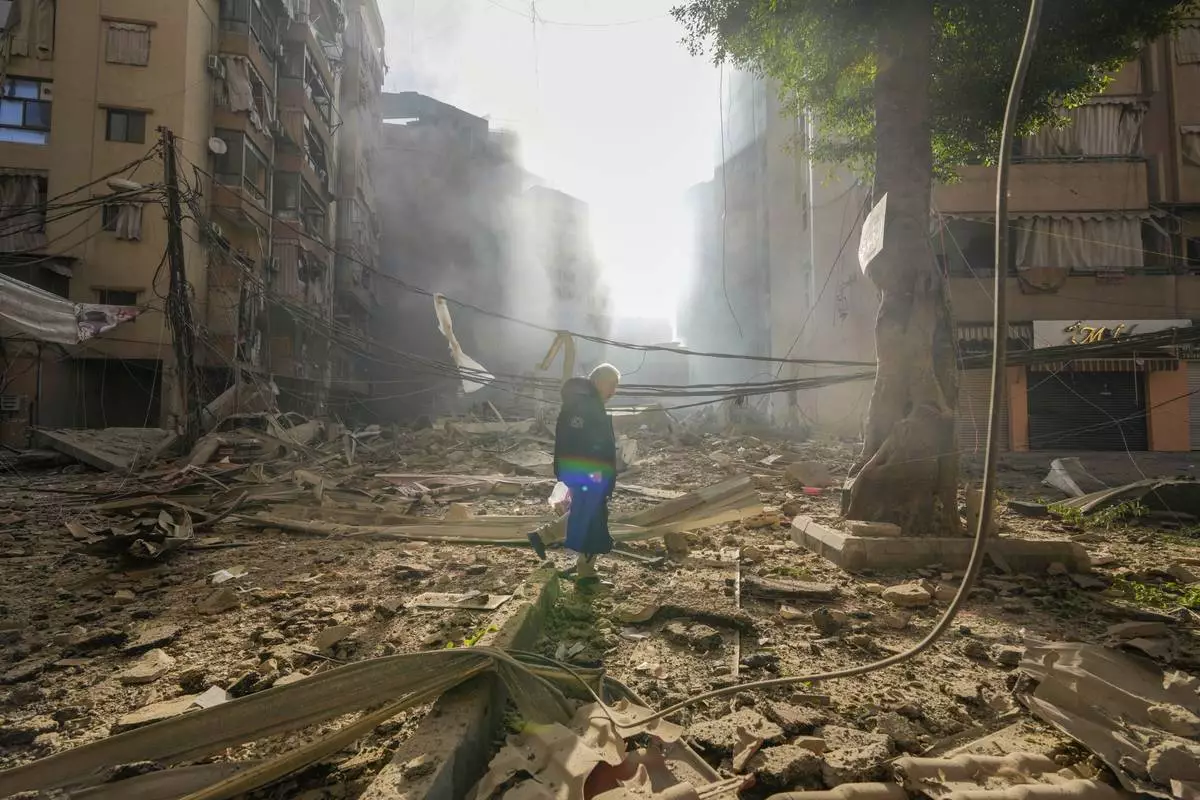
Smoke rises from the site of an Israeli airstrike in Dahiyeh, Beirut, Lebanon, Thursday, Oct. 3, 2024. (AP Photo/Hassan Ammar)

Hezbollah paramedic stuff left on the debris after an airstrike hit an apartment in a multistory building, in central Beirut, Lebanon, Thursday, Oct. 3, 2024. (AP Photo/Hussein Malla)
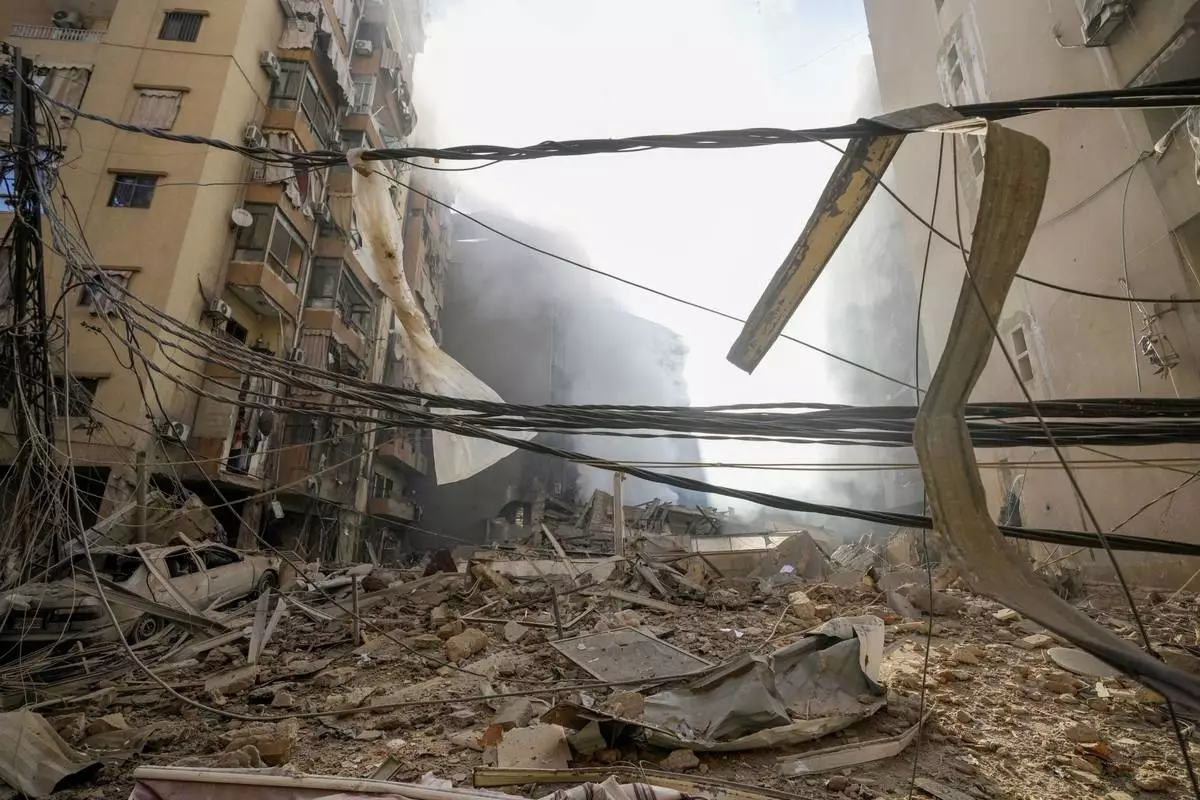
Smoke rises from the site of an Israeli airstrike in Dahiyeh, Beirut, Lebanon, Thursday, Oct. 3, 2024. (AP Photo/Hassan Ammar)
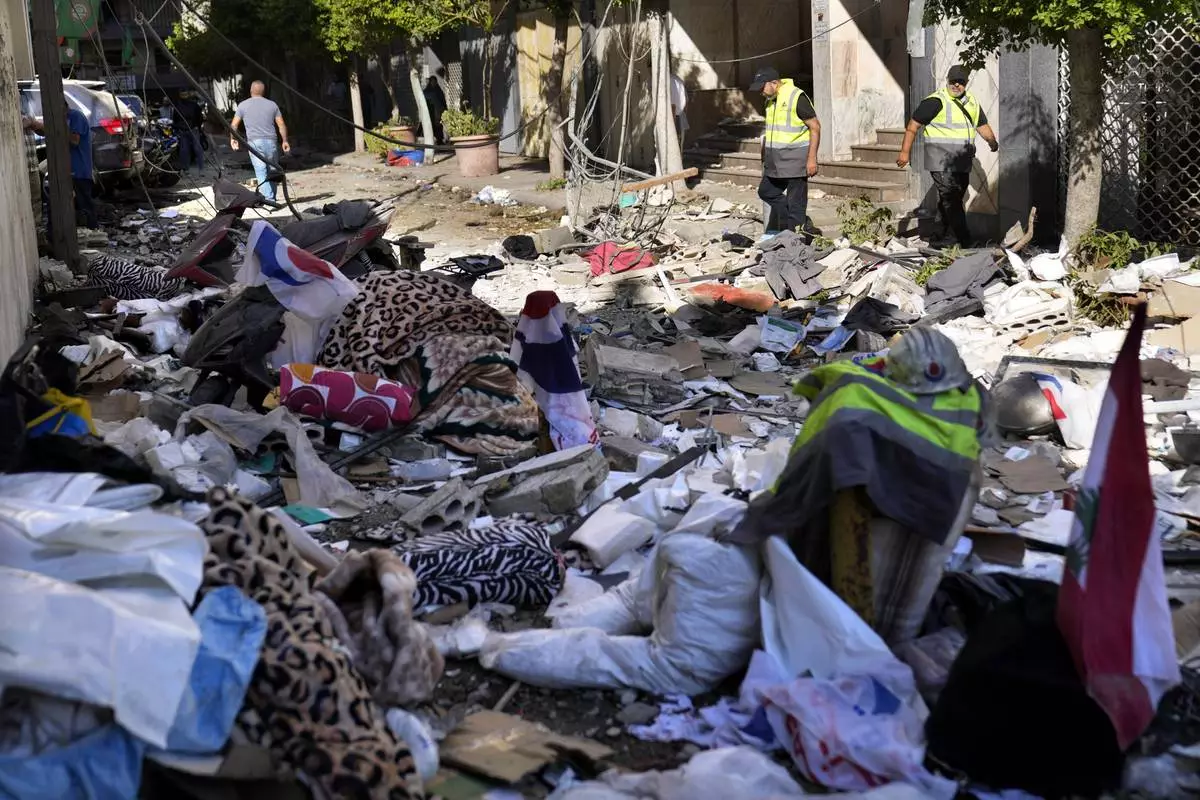
Hezbollah paramedics walk between debris after an airstrike hit an apartment in a multistory building, in central Beirut, Lebanon, Thursday, Oct. 3, 2024. (AP Photo/Hussein Malla)
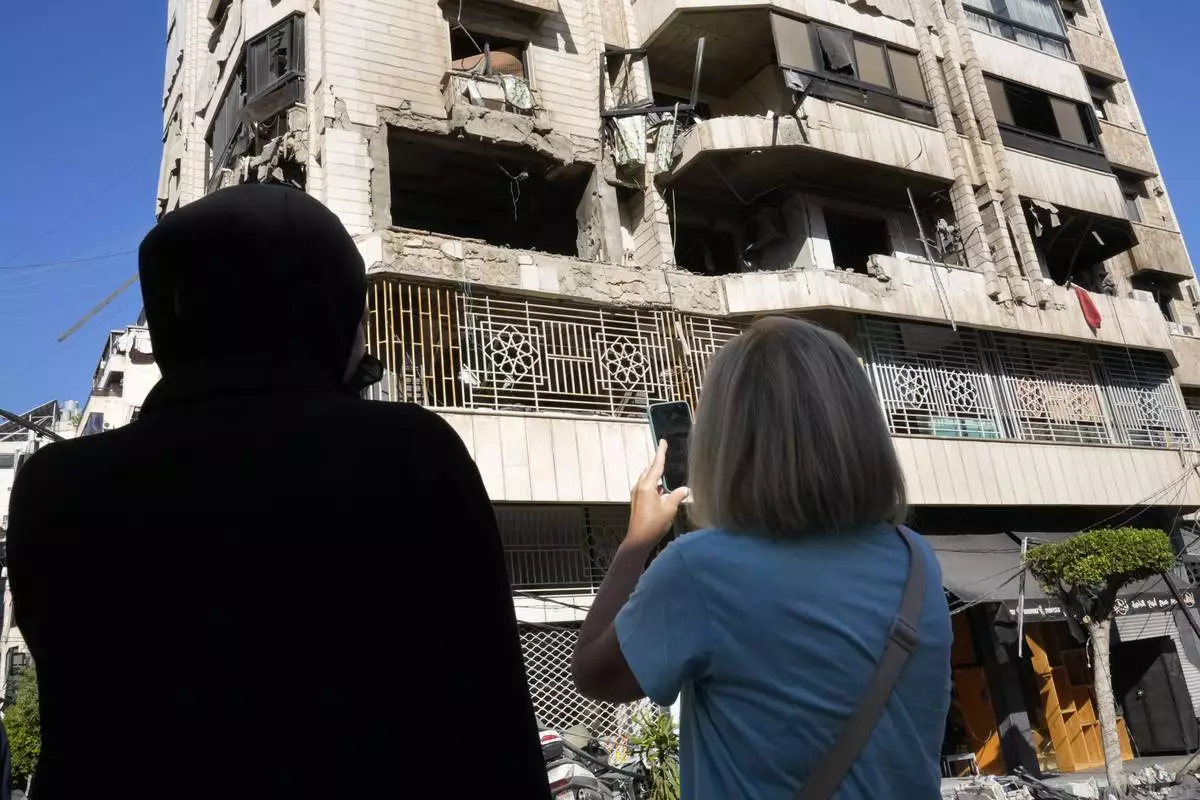
Lebanese women stand in front an apartment in a multistory building hit by Israeli airstrike, in central Beirut, Lebanon, Thursday, Oct. 3, 2024. (AP Photo/Hussein Malla)



































